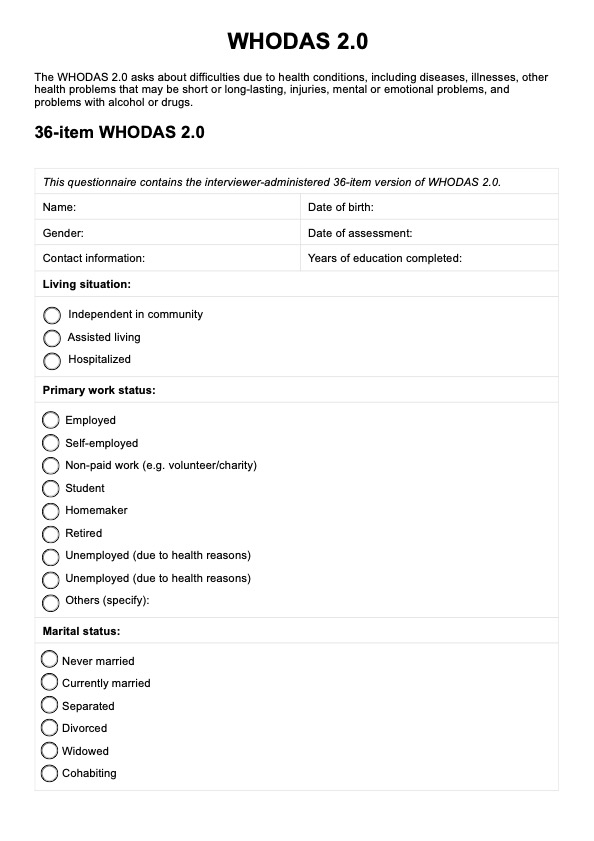The WHODAS 2.0 measures functional disability across six domains, assessing an individual's ability to perform activities of daily life. It evaluates areas such as cognition, mobility, self-care, life activities, participation, and social interactions, providing a comprehensive view of health and disability status.

World Health Organization Disability Assessment Schedule (WHODAS 2.0) - 12-item Version
Use the WHODAS 2.0 to get a general idea of a patient’s level of disability and/or functional impairment, then determine what to do for them based on their score.
World Health Organization Disability Assessment Schedule (WHODAS 2.0) - 12-item Version Template
Commonly asked questions
WHODAS scores are interpreted by summing the item responses within each domain, which are then combined to produce a total disability score. Higher scores indicate greater levels of functional disability, with scores ranging from 0 (no disability) to 100 (full disability).
Yes, WHODAS 2.0 has been extensively tested for reliability and validity across diverse cultures and populations. It provides consistent and accurate assessments of health status and disability, making it a trusted tool for clinical and research use.
EHR and practice management software
Get started for free
*No credit card required
Free
$0/usd
Unlimited clients
Telehealth
1GB of storage
Client portal text
Automated billing and online payments











